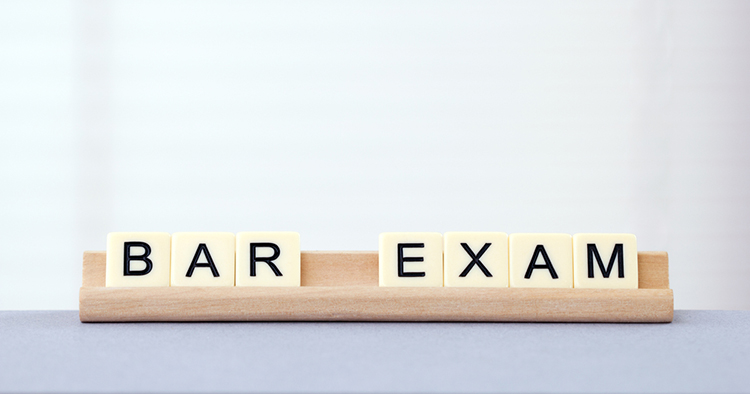Bar passage standard revisions to go back to ABA House of Delegates

Ahlapot / Shutterstock.com
A proposal to tighten a law school accreditation standard regarding bar passage rates will be resubmitted to the House of Delegates at the 2019 ABA Midyear Meeting in Las Vegas.
The proposed revision, which calls for a bar passage rate of at least 75 percent within two years, was approved by the council of the Section of Legal Education and Admissions to the Bar. It was rejected by the House of Delegates at the 2017 midyear meeting. The council “affirmed its commitment” to the revised standard at its September 2018 meeting and directed that it be resubmitted to the House of Delegates, according to a memo posted on the section website.
Under ABA rules, the House of Delegates can send a proposed standard revision back to the council twice for review with or without recommendations, but the council has the final decision on matters related to law school accreditation.
“Going forward, it will be up to schools to assure that their programs will achieve the modest outcomes required by the revised standard. The revised standard is appropriate because it protects students and the public,” the council memo states.
No accredited law school has ever been out of compliance with the current version of Standard 316, and there are various ways to meet its current requirements. One is that at least 75 percent of graduates from the five most recent calendar years have passed a bar exam, or there’s a 75 percent pass rate for at least three of those five years.
Also, a school can be in compliance if just 70 percent of its graduates pass the bar at a rate within 15 percentage points of the average first-time bar pass rate for ABA-approved law school graduates in the same jurisdiction for three out the five most recently completed calendar years.
Kyle McEntee, whose organization Law School Transparency often calls for change within the legal ed section, describes the proposed revision to Standard 316 as “baseline consumer protection.”
“The proposed revision to Standard 316 significantly simplifies and strengthens the current standard. It closes several loopholes and makes the unenforceable enforceable,” he says.
But Alfredo Garcia, the acting provost at Florida’s St. Thomas University School of Law, finds the proposed revision too arbitrary.
“If a law school posts a 72 percent or 73 percent or 74 percent pass rate, what’s to say that’s distinct from a 75 percent pass rate,” says Garcia, who until recently was the dean of his university’s law school. It’s bar passage rate for July 2018 was 70.2 percent, according to information from the Florida Board of Bar Examiners.
“I think the current standard is fair because it is not just one single standard but allows law schools to demonstrate compliance in more than one way,” Garcia says. “It is more just and fair than the standard they are proposing, which is absolutist.”
According to the council memo, it has collected more data about bar passage rates since the proposed revision was first submitted to the house and “engaged in conversations with some law school deans and some key ABA leaders and groups.”
The document also lists information about law schools’ first-time bar passage rates for 2016 and 2017. Out of 202 schools in 2016, 106 had first-time bar passage rates of at least 75 percent. Of those remaining schools, the majority had pass rates between 65 and 74 percent, and 21 had first-time pass rates below 50 percent.
For 2017, 122 out of 203 law schools had first-time bar pass rates of at least 75 percent, the memo states. A total of 15 had first-time pass rates below 50 percent. Under the proposed revision, if a school does not come into compliance with the bar passage rate within the two-year period, the council “may extend the period for demonstrating compliance,” the memo states.
Various groups, including the National Black Law Students Association and the Association of American Law Schools’ deans steering committee, expressed concerns about diversity in the profession when the proposed revision was first submitted to the House of Delegates. In both 2016 and 2017, one law school associated with a historically black college or university had a first-time bar pass rate below 50 percent, the council memo states.
Also, a 2017 letter from the AALS’ deans steering committee expressed concern about what the proposed revision would mean for ABA-accredited law schools in California, where the state bar cut score is 144 and the country’s second highest. In October 2017 the California Supreme Court rejected a proposal to lower the cut score.
Among the ABA-accredited law schools with pass rates below 50 percent, six were from California in 2016 and four in 2017, according to the council memo.
Not all states have released July 2018 bar passage rates yet. But of those that have, many have seen pass rates drops. New York had a 63 percent pass rate for July 2018, compared to 68 percent in July 2017. Indiana’s bar passage rate went from 66 percent in 2017 to 62 percent in July 2018, according to Indiana Lawyer.
In Florida, the bar passage rate for July 2018 was 67.2 percent, compared to 71.3 percent in July 2017.



